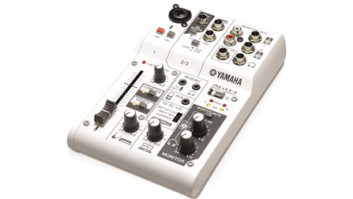Hopefully, you would play a power chord on your guitar, and not attach a power cord to it.
Power cords are ubiquitous, so even if a guitar doesn’t don’t have one, a guitar amp certainly does. Every so often, a guitarist is injured or killed by becoming the “path to ground” through the guitar cable and touching some grounded device, like a microphone.
In almost every instance, someone removed the third pin from the guitar amp power cord or inserted a 3-to-2 adaptor disconnecting the ground pin. Then a simple wire fault inside the amp, where a hot wire touches ground, sets up the disaster.
Because there is no ground connection, that hot wire seeks the best ground. If it’s the guitarist’s lips, so be it. That missing ground pin and the green or yellow-green wire in the power cord are there primarily for safety.
On the ground
Think about this for a second: What is the purpose of a ground wire?
Ask another engineer. I used to say that it “provided a path to ground if there’s a ‘fault’ in the device.” But a friend of mine, Mark Rogers, a PE and consultant at Greenbusch Group in Seattle, pointed out that the purpose of the ground wire is to assure that so much current passes down that wire that it blows the breaker (or fuse) in the line feeding it. This saves you from being the “path to ground” that would have less pleasant consequences.
Sometimes that ground wire can be a layer of shielding in the cable. It could be a foil shield, a braid shield or a combination foil/braid.
Low-frequency performance of any shield is a non-issue. Up to 1,000 Hz, no shielding has any significant effect. From 1,000 Hz on up, different shields have difference effectiveness.
Braid shields are effective up to 400 MHz. They have a lot of mass (low resistance), which is effective at these frequencies. At around 400 MHz, the wavelengths of the signals begin to get so small that the braid becomes less and less effective. Someone compared it to a chain link fence. It’ll keep out a dog but a mosquito sails right through.
Foil shields pass braid shields starting at 50 MHz or so, and go up into the gigahertz. They’re more like a “skin” and these high frequencies operate where “skin effect” predominates. In applications where there’s a lot of RF, such as a transmitter site, a foil-shielded cord certainly can help reduce the amount of RF that gets into a device.
Of course, power cords, like all shielded cables, have a potential “Pin 1” problem — that is, the ground pin and shield should be terminated at the entrance to the device. If it runs into the box to get to the power supply, for instance, you have a really nice antenna, feeding whatever’s on that shield into the box.
Nice design, Sherlock!
Balance of power
Power cords may have wires twisted around each other but they are not “balanced lines” and do not reject noise. A balanced line only occurs where the two wires, and all the passive pieces attached to them, have identical impedance in respect to ground.
In a power cord, one side is hot and the other is neutral (and tied to ground somewhere at the pole or junction box). If you don’t believe me, carefully read the voltage from the hot pin to ground and from the neutral to ground. If you see anything significant running from neutral to ground, you have a serious problem and should consult an electrician.
Sometimes switching supplies, which are everywhere these days, dump all sorts of harmonic junk onto the neutral. I once saw 40 Volts of junk on a neutral compared to ground.
A shielded power cord where the ground is terminated correctly at the entrance to the chassis can be effective at external RF. But once you have crap on the neutral, it’s inside the cord and shielding will do nothing helpful.
A lot of power conditioning and power balancing devices try to do just that: turn power distribution into balanced lines. I have heard more arguments about whether these work or don’t work. But the idea makes sense.
If you have an opinion or two on this subject, write a column yourself and send it to the editor, Paul McLane at [email protected].












